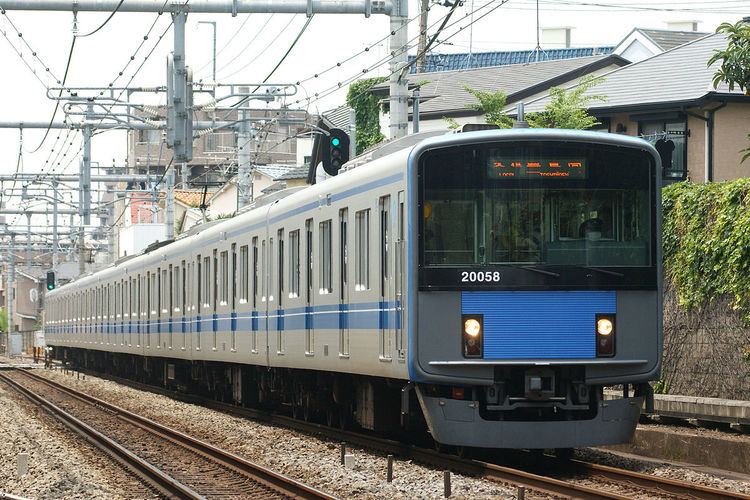In service 2000–Present Built at Kudamatsu, Yamaguchi Constructed 1999–2005 | Number built 144 vehicles (16 sets) | |
 | ||
The Seibu 20000 series (西武20000系) is an electric multiple unit (EMU) train type operated by the private railway operator Seibu Railway on commuter services in the Tokyo area of Japan since 2000.
Contents
Fleet
As of 1 April 2015, the fleet consists of eight 10-car sets and eight 8-car (20050 series) sets, based at Kotesashi, Minami-Iriso, Musashigaoka, and Tamagawa-Josui depots for use on Seibu Shinjuku Line and Seibu Ikebukuro Line services.
8-car sets
The 8-car sets are formed as shown below with four motored (M) cars and four unpowered trailer (T) cars, and car 8 at the Shinjuku/Ikebukuro end.
10-car sets
The 10-car sets are formed as shown below with five motored (M) cars and five unpowered trailer (T) cars, and car 10 at the Shinjuku/Ikebukuro end.
Interior
Seating consists of sculpted longitudinal bench seating throughout, with an individual seat width of 460 mm (18 in) per person. Wheelchair spaces are provided in the two outermost cars at each end. Priority seats are provided at the end of each car. Scrolling LED passenger information displays are provided above the doorways.
History
The first train was built in 1999, undergoing test running before entering revenue service in 2000.
In August 2015, set 20101 was modified with full-colour LED destination indicators replacing the original three-colour LED type.
Livery variations
From 8 October 2016, eight-car set 20158 operated in a special Galaxy Express 999 vinyl wrapping livery. It is scheduled to operate in this livery until March 2019.
